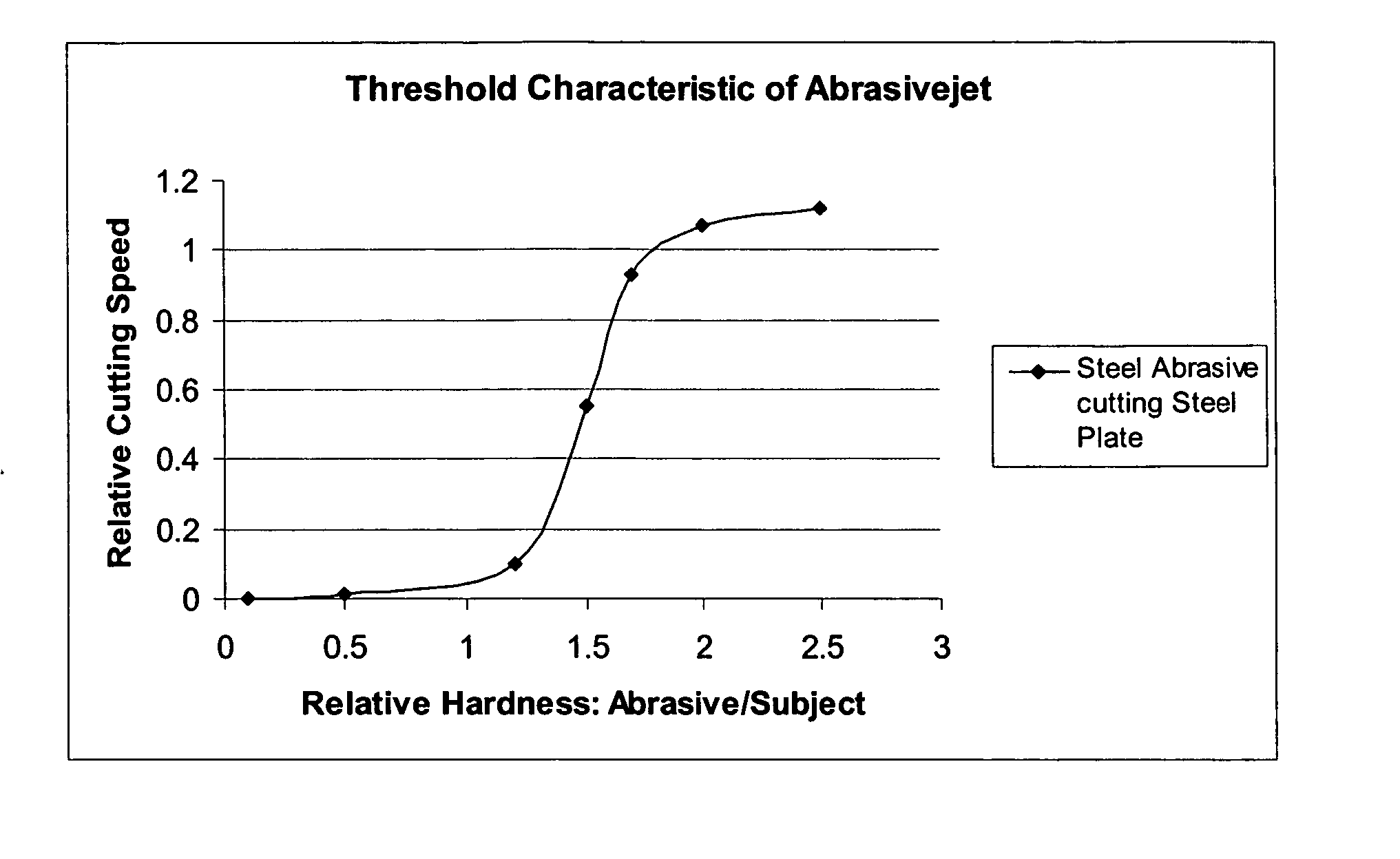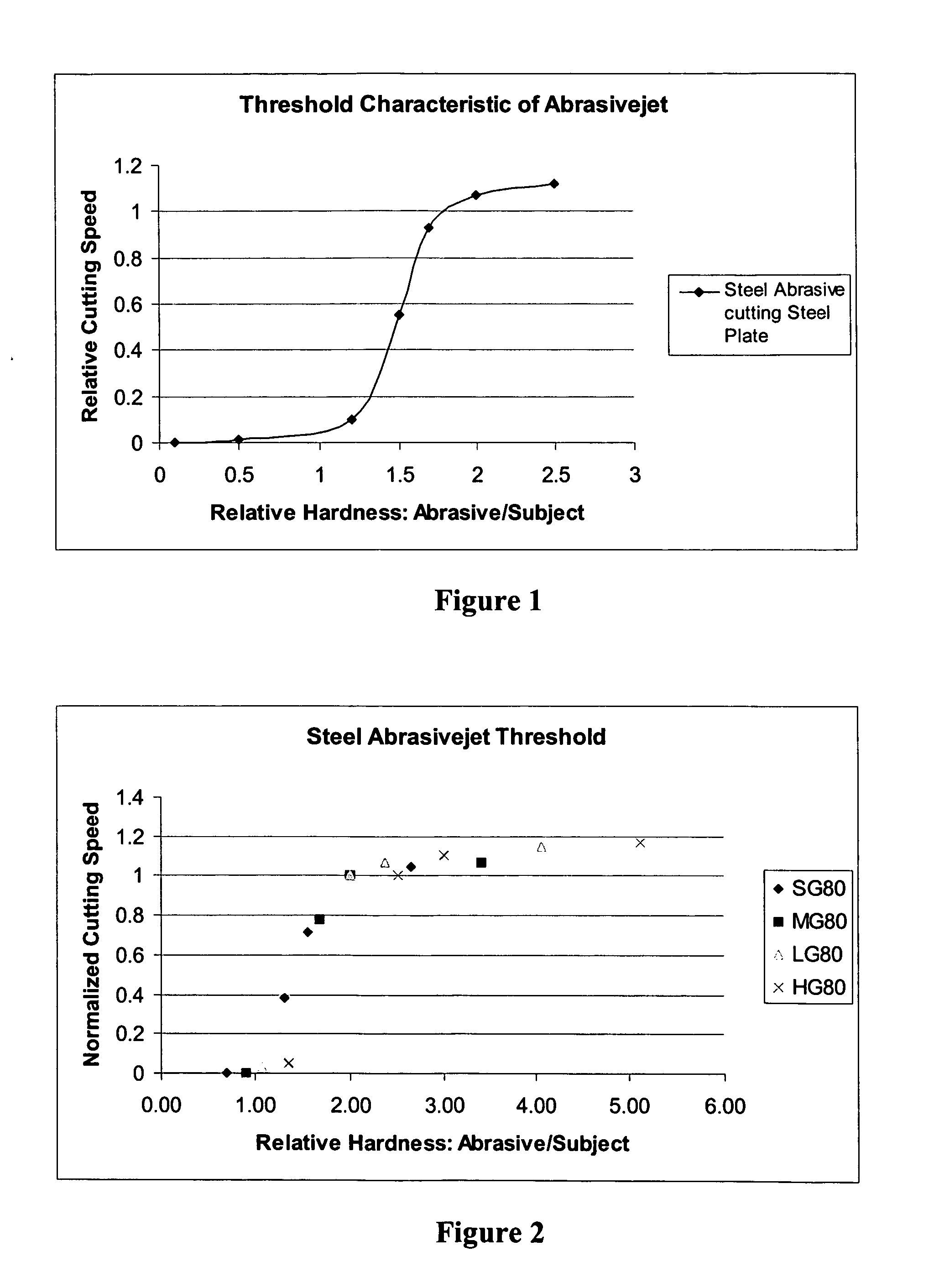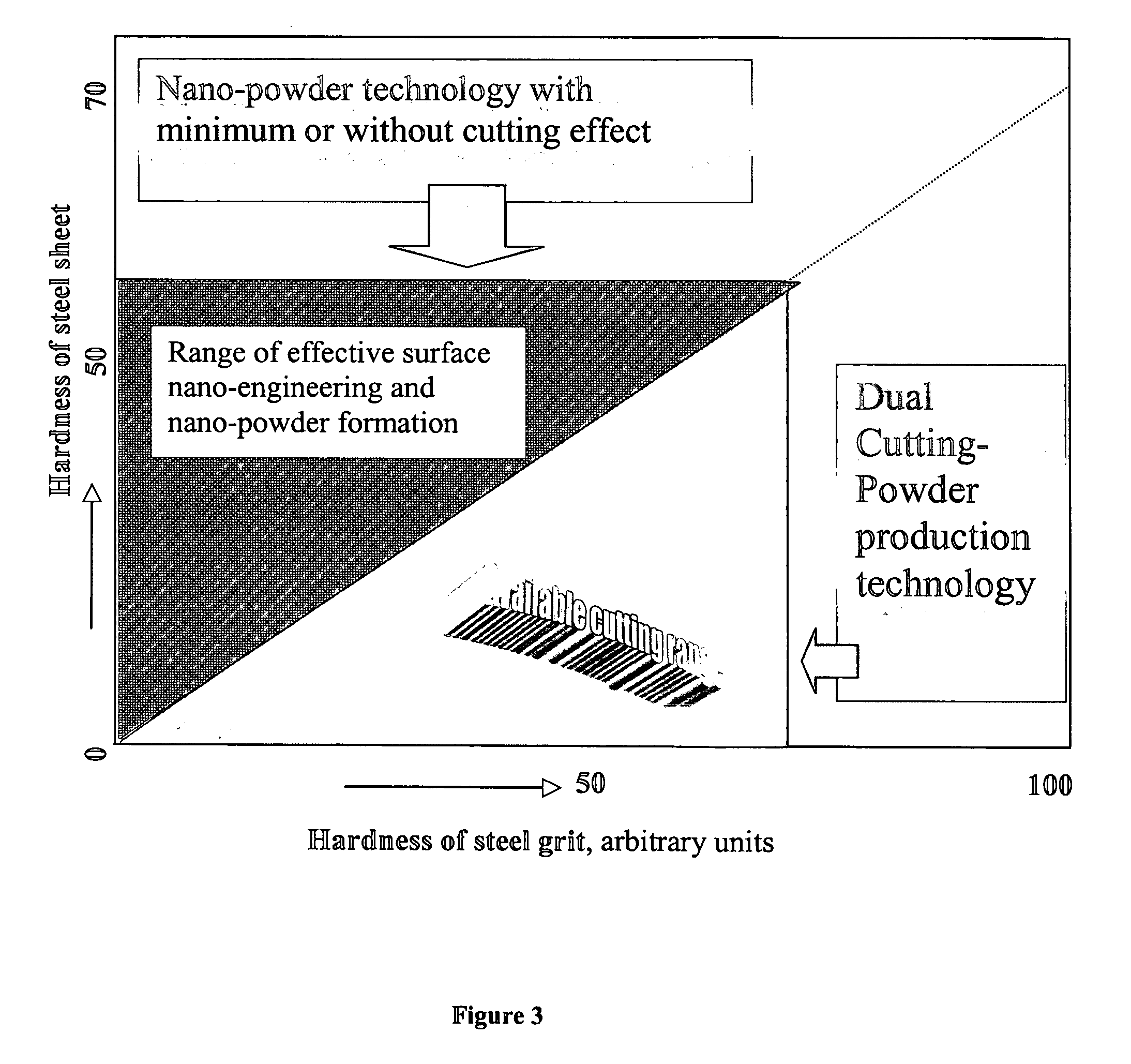High pressure fluid/particle jet mixtures utilizing metallic particles
a technology of metallic particles and fluids, applied in metal-working equipment, grain treatment, manufacturing tools, etc., can solve the problems of high energy and resource use efficiency, conventional particle jet technology is also currently limited to performing one viable function, and conventional particle jet technology does not effectively use garnet abrasives, etc., to achieve energy and cost saving, reduce costs, and increase the life of the nozzle
- Summary
- Abstract
- Description
- Claims
- Application Information
AI Technical Summary
Benefits of technology
Problems solved by technology
Method used
Image
Examples
Embodiment Construction
[0057] At the outset, it should be clearly understood that like reference numerals are intended to identify the same structural elements, portions, or surfaces consistently throughout the several drawing figures, as may be further described or explained by the entire written specification of which this detailed description is an integral part. The drawings are intended to be read together with the specification and are to be construed as a portion of the entire “written description” of this invention as required by 35 U.S.C. §112.
[0058] For purposes of this patent, the terms appearing below in the description and the claims are intended to have the following meanings:
[0059]“Abrasive” means any particulate material intentionally introduced into a pressurized liquid jet in the form of sharp edge particles, such as angular, cubical, or non-spherical shapes, generally used for material removal or surface treatment upon interaction with subject material.
[0060]“Abrasivejet” means a mix...
PUM
| Property | Measurement | Unit |
|---|---|---|
| pressure | aaaaa | aaaaa |
| incident angle | aaaaa | aaaaa |
| pressure | aaaaa | aaaaa |
Abstract
Description
Claims
Application Information
 Login to View More
Login to View More - R&D
- Intellectual Property
- Life Sciences
- Materials
- Tech Scout
- Unparalleled Data Quality
- Higher Quality Content
- 60% Fewer Hallucinations
Browse by: Latest US Patents, China's latest patents, Technical Efficacy Thesaurus, Application Domain, Technology Topic, Popular Technical Reports.
© 2025 PatSnap. All rights reserved.Legal|Privacy policy|Modern Slavery Act Transparency Statement|Sitemap|About US| Contact US: help@patsnap.com



